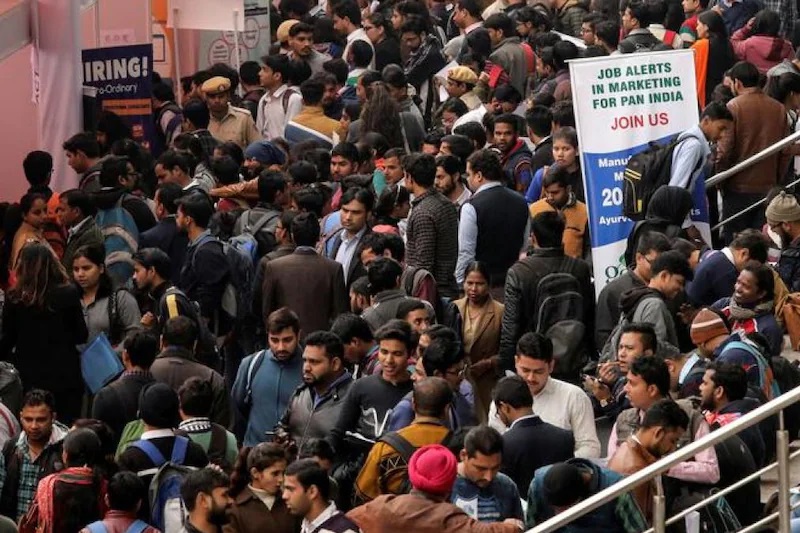
in june quarter, hiring fell to a 2 year low report
In the June quarter, hiring by India Inc. fell to a two-year low, even falling to lows of early 2020 for some recruitment firms when the nation was struck by the pandemic’s first wave.
There are reportedly about 225,000 active jobs open in the market, down about 100,000 from a year ago, according to hiring companies from various industries. A 75% quarterly decline in hiring has been attributed to decreased revenue visibility and a freeze on new hires following a few quarters of “over-hiring and layoffs.”
“When compared every quarter, our hiring demand has decreased by 75% in both permanent and contract staffing. The mandates from April to June are now comparable to those from the same time in 2020, according to Teamlease Digital CEO Sunil Chemmankotil.
One of the biggest staffing companies, TeamLease, claims that its clients are only offering a 12% salary increase during job shifts, explaining that their budgets won’t allow for it.
This is a far cry from six to eight quarters ago when an employee’s pay in the IT, retail, or BFSI industries would be doubled if they wanted to quit.
As businesses and mandates emerging from industries like IT have decreased from 60% to 10% of the current contract and permanent hiring, contract hiring has decreased by 60–70%.
Keep Reading
According to Prasadh M.S., head of workforce research at specialist staffing firm Xpheno, “We are looking at a muted April-June quarter of 2023 with active talent demand dipping to nearly match the previous lows seen in April-June of 2021.” “The cautionary slowdown during the second wave of the pandemic was the primary cause of the low demand in 2021. The continued decline in tech spending and the low to nonexistent expansion hiring by important tech cohorts are the main causes of the current quarter’s lack of activity, he continued.
According to Xpheno’s data, 228,000 active jobs across sectors are projected for the June quarter, down from 311,000 during the same period last year.
When compared on a like-for-like basis, hiring mandates were 225,000 in 2021, the year India experienced the deadly second wave of covid, and 160,000 in 2020.
Companies have mandated the creation of active jobs.
For the large recruitment firm Manpower, there is still some “silver lining for the blue and grey-collar employees” even though the white-collar workforce has taken a severe beating.
“The demand for blue and grey-collar jobs has increased by 15% while the number of white-collar jobs has decreased by 40%. According to Alok Kumar, senior director of Manpower, a division of the Manpower Group, the latter has been supported by production-linked incentive schemes (PLI), which have sparked a surge in manufacturing and hiring in the energy and EV sector.
Kumar emphasized that the lower and middle management levels were where the sudden decline was most noticeable. White-collar jobs could account for 20% of the business for large recruitment agencies.
The recruitment industry is scrambling to find new ways to generate income.
“This quarter’s performance was impacted by market complexity and headwinds in the IT and engineering talent market. Adecco strategically responded by expanding its customer base and focusing on MSMEs rather than just relying on big IT service providers, according to A.R. Ramesh, director of digital business solutions, professional staffing, and global engagement at Adecco.









